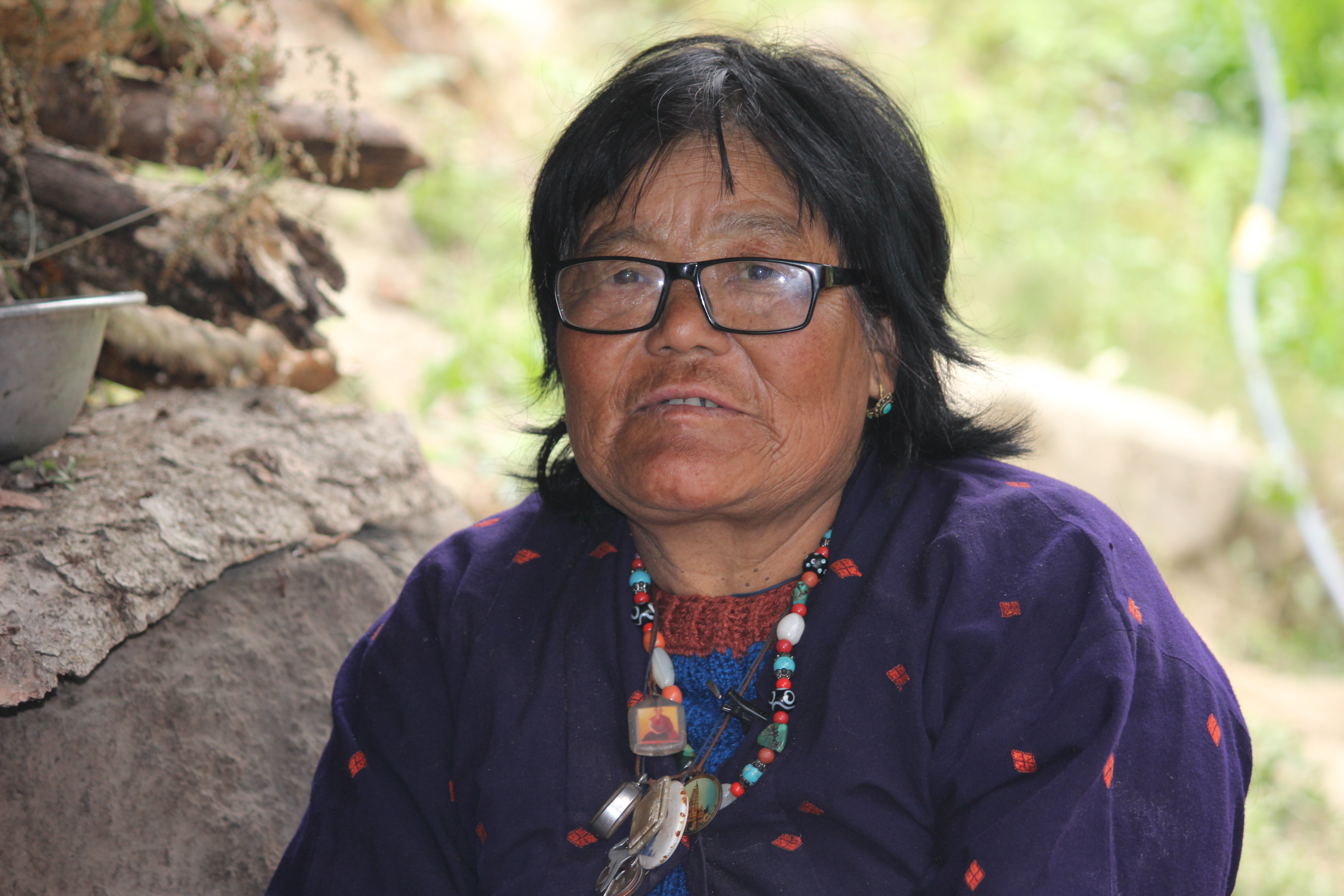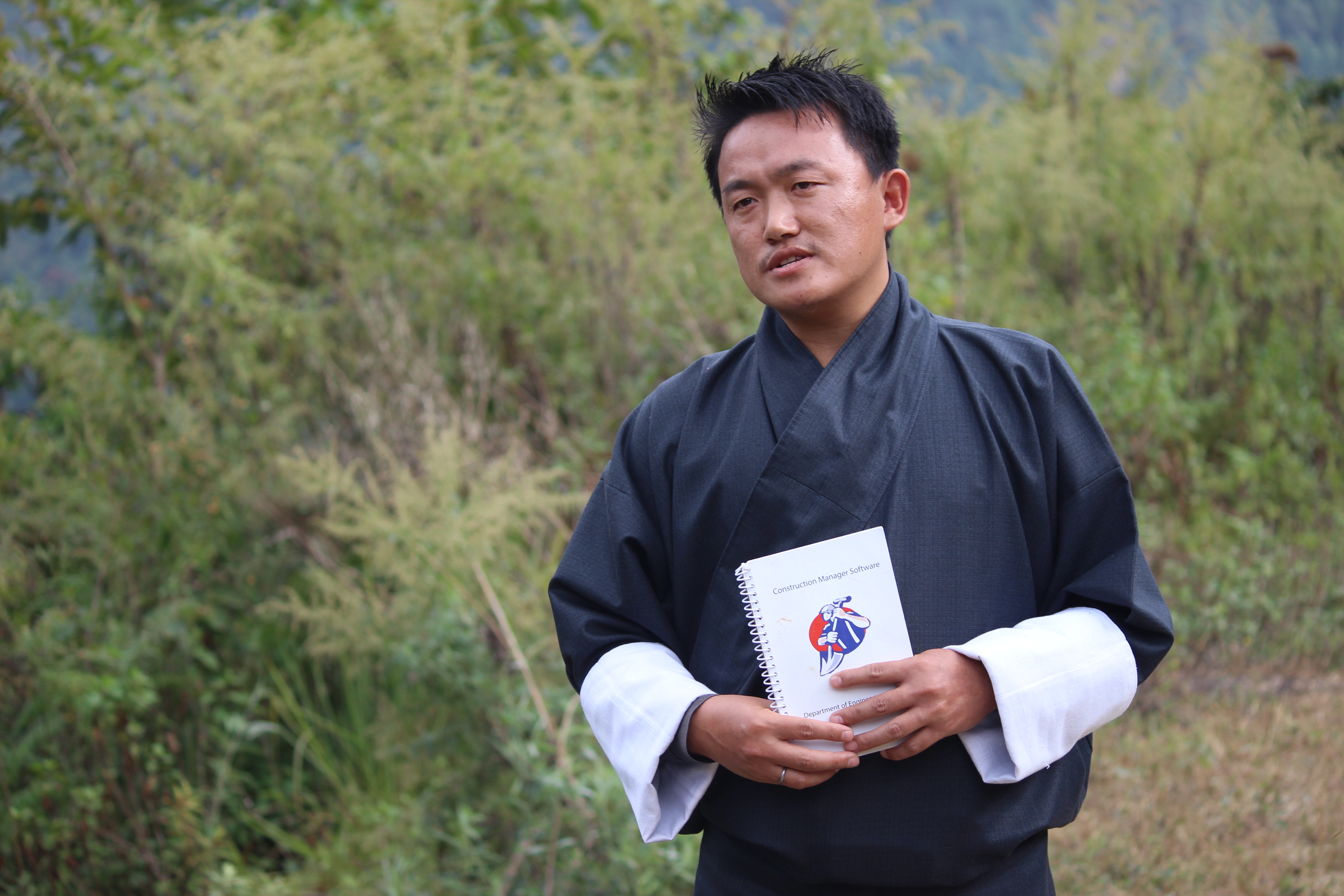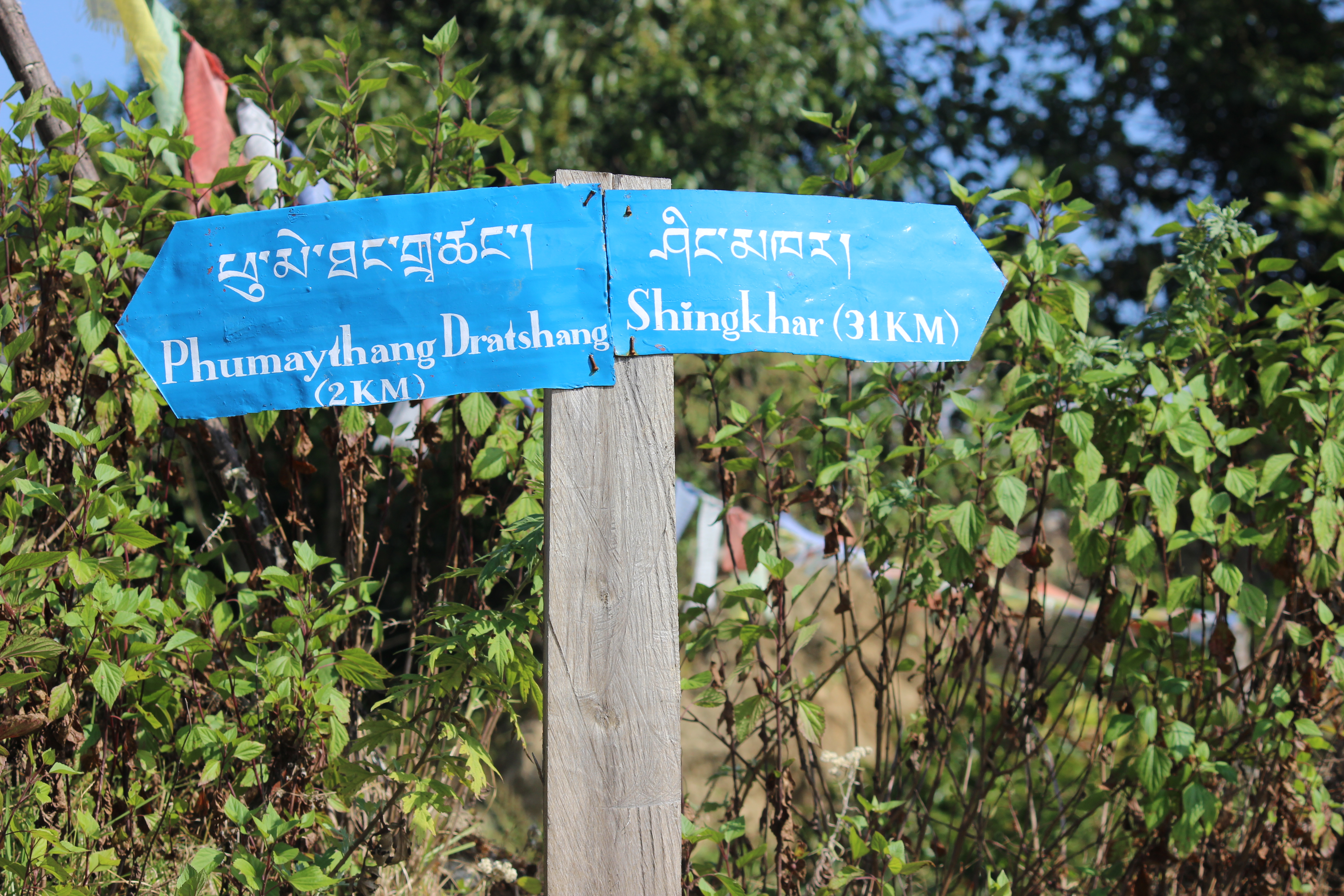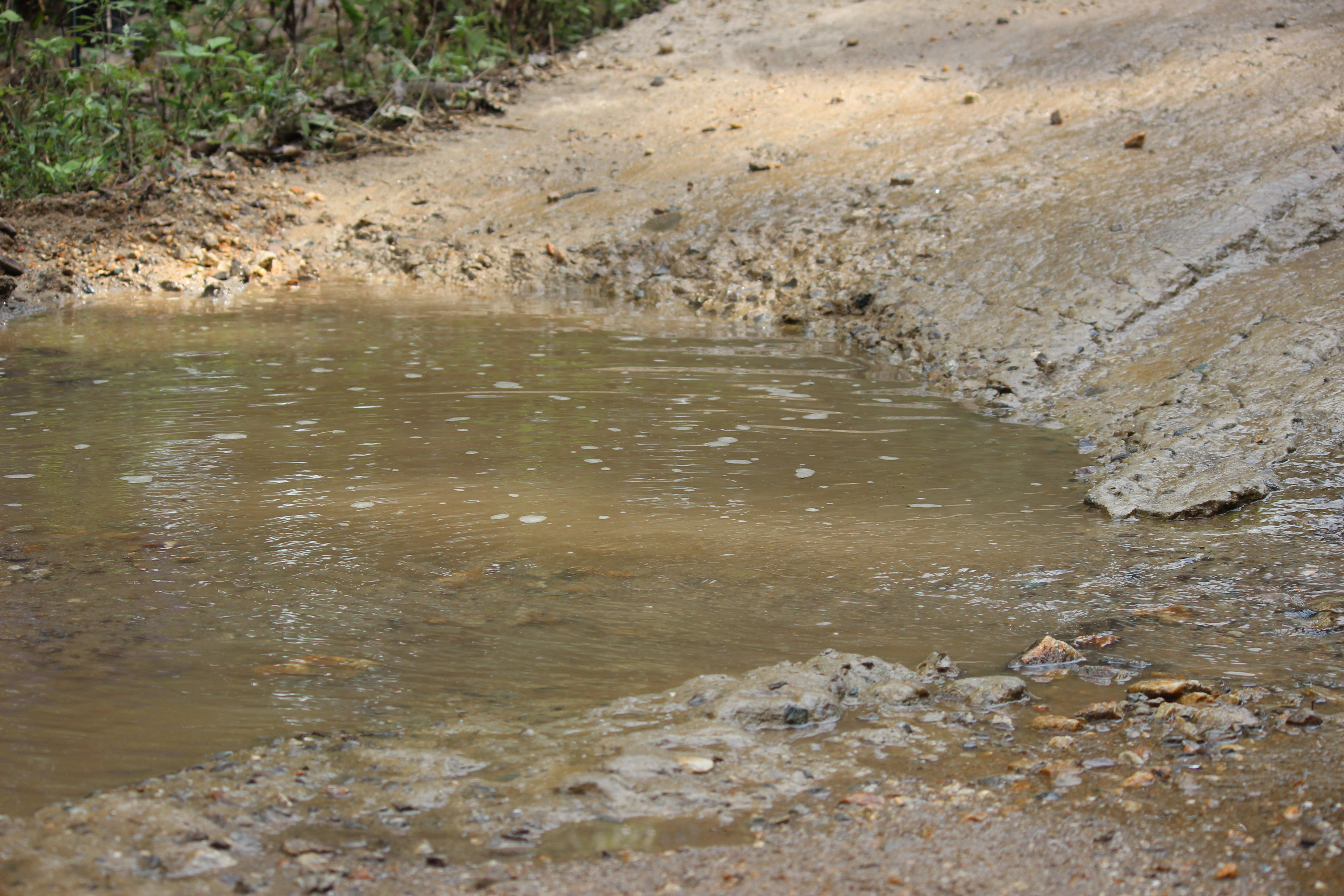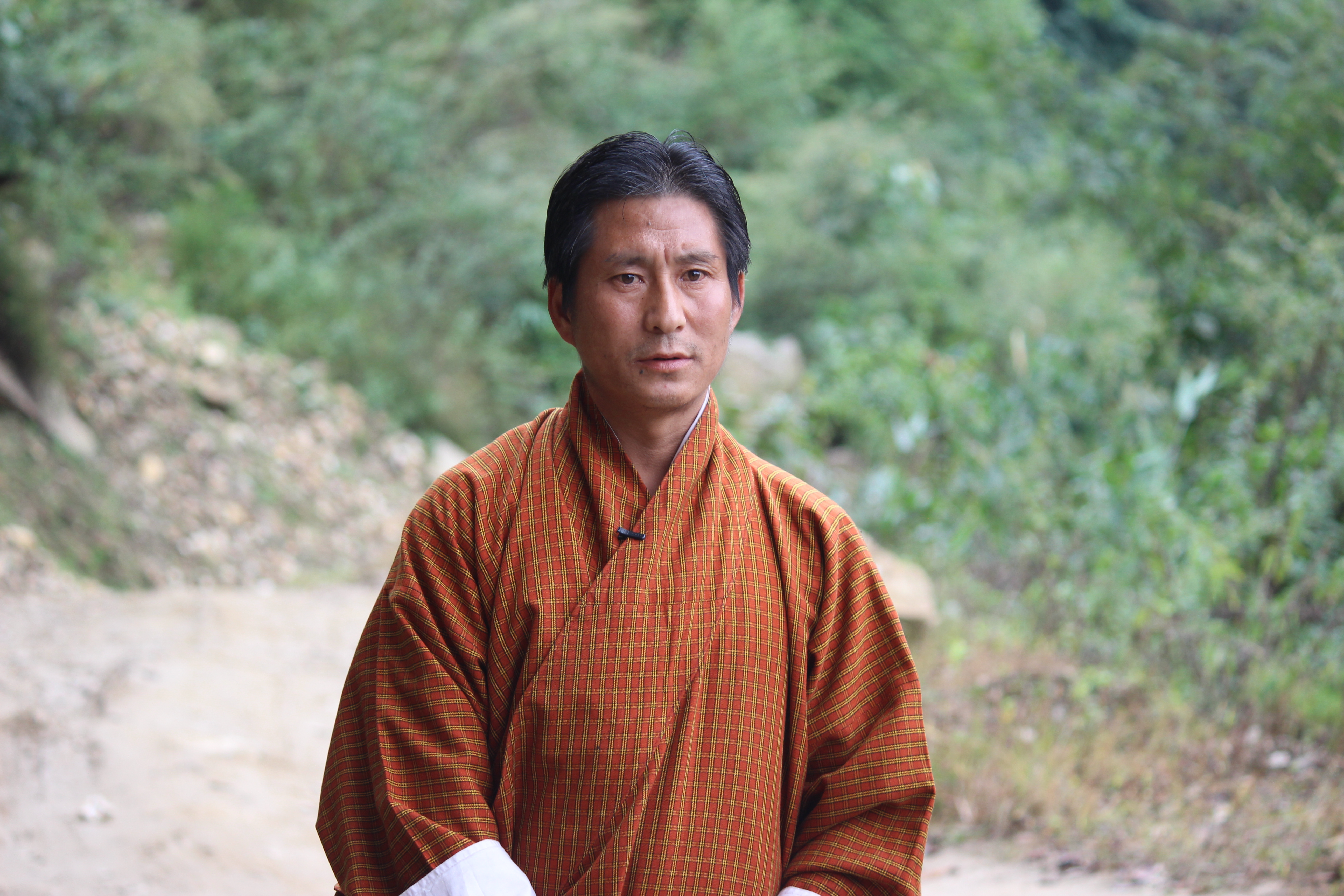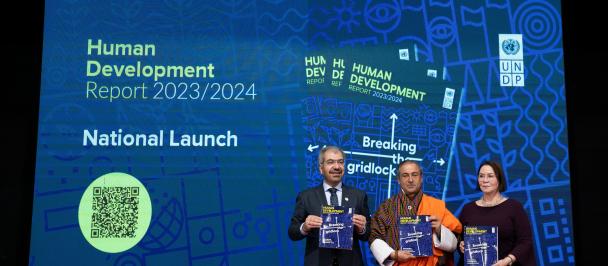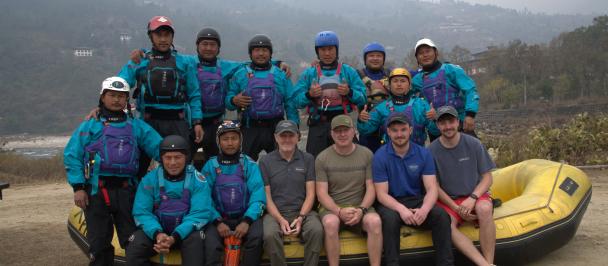Ugyen Lhaden from Radi, Shingkhar Gewog
The ride from Nimshong Chiwog to Shingkhar Gewog in Zhemgang is long and bumpy. Ugyen Lhaden from Radi Chiwog in Shingkhar runs a tiny shop in a roadside makeshift hut. Transporting goods becomes a daunting task for Ugyen every monsoon as landslides triggered by heavy rainfall often render the road impassable.
“I heard the road will be black-topped. This would make our lives a lot easier,” she said.
It won’t be long before her wish is fulfilled. The 31-km Nimshong- Shingkhar Gewog Centre (GC) road will not only be blacktopped but also climate-proofed. The contract has been awarded and the work will begin from next month.
Sangay Duba, Project Engineer
What is climate-proofing?
“Climate-proofing of road essentially means integrating climate-resilience features in the design of the road to ensure it remains usable throughout the year,” said Sangay Duba, the Project Engineer from the Department of Roads (DoR) of the Ministry of Works and Human Settlement.
“The road will have bigger and better drainage system to prevent rain water run-off onto the road during monsoon, improved soling, and a thicker layer of blacktopping. The blacktopping layer will be increased to 30mm from the usual 25mm.”
Another key feature of climate-proof road is that bioengineering interventions will be carried out in critical stretches to stabilize slopes. These will drastically reduce risks of landslides and prevent roads from getting blocked, damaged or washed away during monsoon.
The climate-proofing of the Nimshong-Shingkhar GC road is funded by the Global Environment Facility (GEF) through the National Adaptation Programme of Action (NAPA) III Project titled “Enhancing Sustainability and Climate Resilience of Forest and Agricultural Landscape and Community Livelihoods.” Initiated and implemented by the Royal Government of Bhutan, the NAPA III project is supported by UNDP.
The Nimshong-Shingkhar GC road is the first road in Bhutan to be climate-proofed. It was chosen based on the findings of the Technical Assessment of GC Roads for Enhanced Climate Resilience carried out within the project landscape during the Project Preparation Grant (PPG) period in 2016. The Nimshong-Shingkhar road was found to be the most vulnerable to climate induced disasters.
Shingkhar Gup Nidup
Shingkhar Gup Nidup said road blocks presents numerous challenges to the people in his gewog. “Road blocks are frequent during monsoon. Every time there are blocks, we would clear them, but there would be another block within no time,” he said. “We hope this wouldn't be the case once the road is climate-proofed.”
Poor drainage causes surface runoff, damaging the GC road in several parts
Rural roads and poverty reduction
A vast majority of Bhutan’s 700,000 plus population rely on agriculture for livelihood. And rural roads have played significant role in poverty reduction by linking rural farming to market, providing opportunities for improved livelihood to the farmers.
Zhemgang is one of Bhutan’s most remote districts. The country’s fourth Poverty Analysis Report (PAR) released by the National Statistics Bureau (NSB) in 2017 found Zhemgang to be among the five districts with the highest poverty rates.
People in Shingkhar also rely on agriculture and livestock for livelihood. “Almost everything, including orange and cardamom, grow here because of favorable climate condition but taking our farm produce and livestock products to the market remains a challenge owing to the poor road condition,” Gup Nidup said.
The Gup added climate-proofing of the road would enhance access to market, which will lead to improved income earning opportunities.
Impacts on rural youth migration
The Gup believes it will also help in preventing migration. Shingkhar Gewog has 310 households and is home to 3477 people. “But currently, there are only 1276 people actually living in the gewog. The rest have migrated to other districts. Some have found government jobs. Others have moved in search of better lives,” said the Gup.
He says some of the people who left have expressed interest to return home for good if the road condition is improved.
Nimshong Tshogpa Karma Tshitrum
With three villages, Shingkhar’s Nimshong Chiwog is accessible by a proper, blacktopped road, but in terms of proximity to the Gewog Centre, Nimshong is the farthest Chiwog. “We have to visit the Gewog Centre regularly to avail ourselves of health, agricultural and other essential services,” Nimshong Tshogpa Karma Tshitrum said. “In summer, it’s hard for even Boleros to pass through, but we are hoping our trips to the Gewog Centre and back would be less taxing after climate-proofing of the road,” he added.
Besides Shingkhar Gewog, the road will also benefit Bardo Gewog. Currently, Shingkhar is two-hour drive from Nimshong and Bardo, three-hour drive. The travel time will be reduced considerably once the climate-proofing work is over.

 Locations
Locations